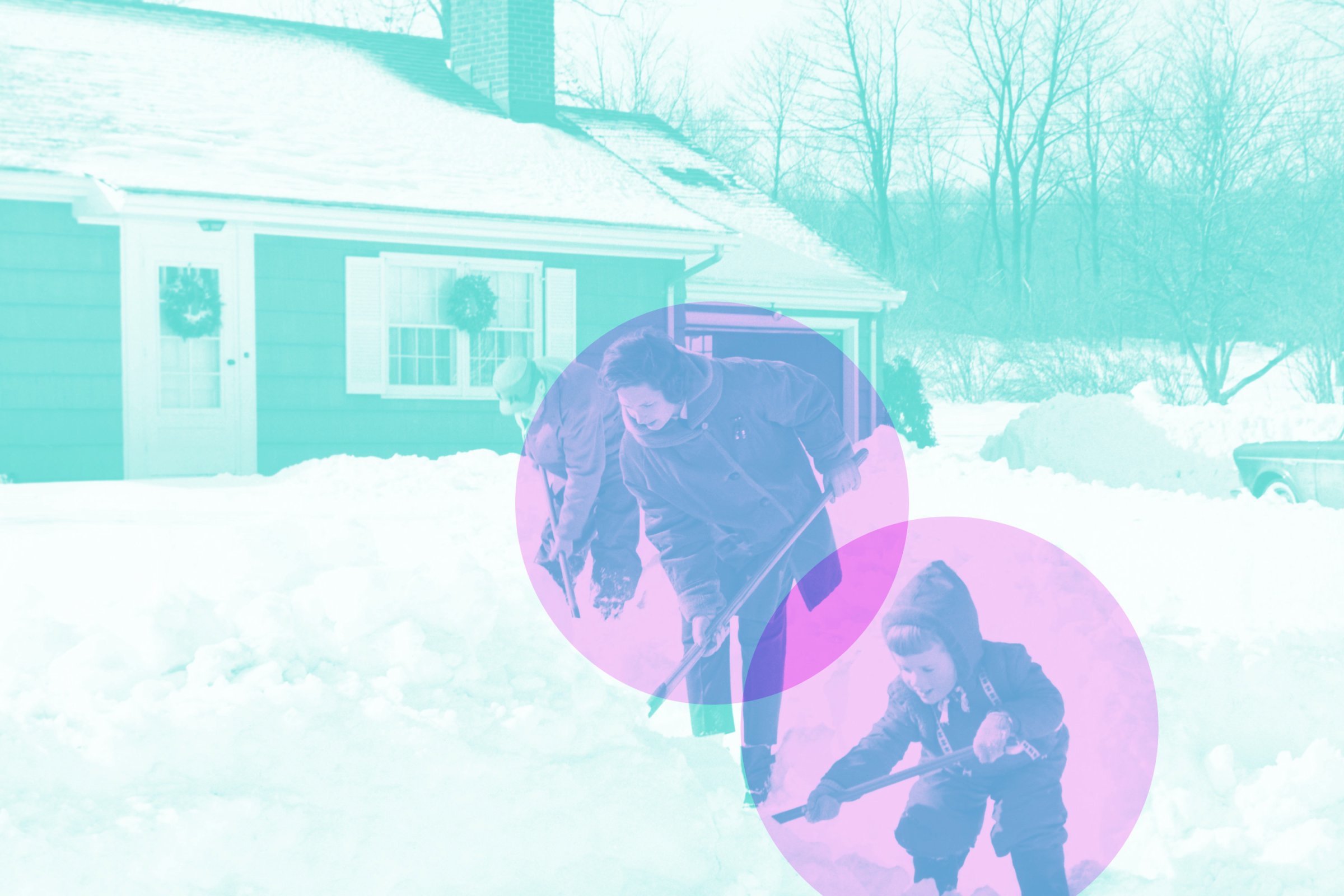
Here’s one bright spot in this weekend’s big blizzard forecast: shoveling snow is really good exercise. Doing it for just 30 minutes burns 215 calories for a 150-pound person.
But shoveling snow also comes with a lot of risks, especially for the heart and back. Cold weather already works against you by making your blood vessels narrow, which causes your blood pressure to raise and increases your risk for clots. Adding heavy snow means more strain on the heart and back, setting you up for injury. In 2014, more than 200,000 people were treated in emergency rooms and clinics for snow removal injuries.
“This is a weekend warrior activity,” says Dr. Joseph Abboud, an orthopaedic surgeon at the Rothman Institute/Sidney Kimmel Medical College at Thomas Jefferson University in Philadelphia. “If you’re in good shape and you exercise routinely, you’re going to be fine.” Unfortunately, he says, that’s not the case for most Americans—especially for older people. “If you’re not in good shape, you may want to spend the extra money to have somebody do it for you.”
But for those psyched to shovel, here’s how to get the most exercise while decreasing the chances of throwing out your back or your heart, from Abboud and the American Academy of Orthopaedic Surgeons.
Warm up for 10 minutes before you start shoveling, and consider taking an anti-inflammatory early to ease pain later.
Assume proper shovel form, which isn’t the hunched, grunting guy throwing snow over his shoulder that you’re picturing right now. “Keep things close to your body, and use your legs for pushing the snow instead of throwing it,” Abboud says. You’ll have to bend your back to get into it, but don’t over-flex your spine.
Push snow—don’t throw snow. You might think you look cool tossing a mound of snow over your shoulder, but twist too much and you may stress your back. “Pushing it is better than lifting and throwing it,” Abboud says. “Tossing looks more glamorous, but that’s how people end up with injuries.”
MORE: How To Get Rid Of Lower Back Pain
Lift with the legs. If you can’t push snow to the side, lift a little bit at a time. Start by squatting (with bent knees and a straight back) and lift the snow it by straightening your legs without hunching your back.
Brace your core. Make sure your abs are working while your back is working. “We have a tendency to bend over and hang down, and we forget to use our legs and ab area,” Abboud says. “It involves a bit of a conscious effort.”
Start early when snow is just dusting the sidewalk—it’s lightest before it’s packed on. “You want to do this in a gradual fashion,” says Abboud. Shovel periodically, every 3-4 hours, to reduce the strain on your joints, he says.
MORE: 10 Deskercises You Can Do At Work
Take breaks frequently and drink lots of water.
Ignore all of the above, and hire someone to do it for you. If all of this sounds tough, consider easing into exercise in a lower impact (and warmer) environment, and leave the shoveling to those who can handle it. “A lot of people want to save $20, but they end up paying it in co-pays in seeing physicians for injuries,” Abboud says.
More Must-Reads from TIME
- Cybersecurity Experts Are Sounding the Alarm on DOGE
- Meet the 2025 Women of the Year
- The Harsh Truth About Disability Inclusion
- Why Do More Young Adults Have Cancer?
- Colman Domingo Leads With Radical Love
- How to Get Better at Doing Things Alone
- Michelle Zauner Stares Down the Darkness
Write to Mandy Oaklander at mandy.oaklander@time.com